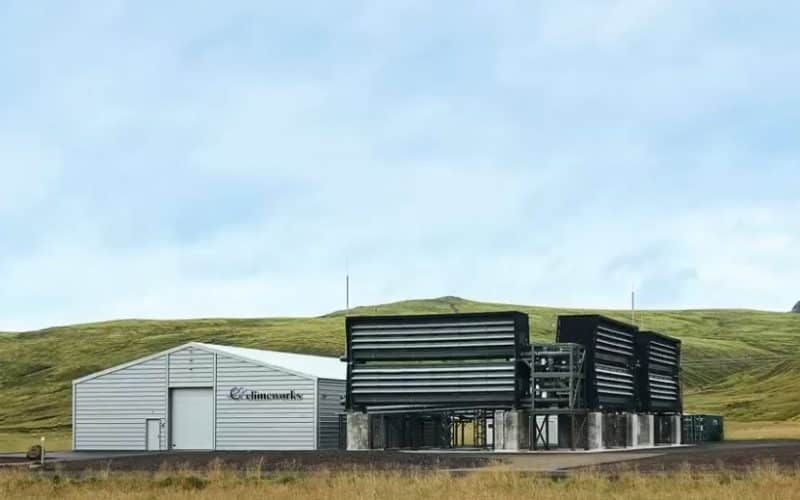
In the fight against climate change, reducing emissions alone is just not enough. To truly mitigate global warming, we must actively remove existing carbon dioxide (CO₂) from the atmosphere via carbon capture.
We already discussed carbon removal through enhanced rock weathering and biochar application, now we will show you how it is possible to apply direct air capture and storage.
Climeworks, a Swiss company, has developed such a pioneering carbon capture solution in 2023 called Orca – the world’s first large-scale direct air capture and storage plant. Located in Iceland, Orca captures CO₂ directly from the air and stores it underground, where it mineralizes into stone, ensuring permanent removal.
This innovative approach not only addresses current CO₂ levels but also sets a precedent for scalable carbon removal technologies essential for mitigating global warming. But there are still some issues to solve so we will see.
There were 628 projects in the commercial carbon capture and storage (CCS) facilities pipeline worldwide as of July 2024. 50 of these were operational, while almost 290 were in early development. The majority of projects in the CCS facilities pipeline are located in North America.
How Orca’s Carbon Capture Works
Orca employs large fans to draw ambient air into its system. The air passes through filters containing specialized sorbent materials that selectively capture CO₂ molecules. Once the filters are saturated, they are heated to release the concentrated CO₂. This CO₂ is then mixed with water and injected deep into basaltic rock formations underground. Over time, the CO₂ mineralizes, turning into solid carbonate minerals, effectively sequestering it permanently.
You can see the machines at work in this video.
Capacity and Impact
Orca is designed to remove up to 4,000 tons of CO₂ annually, equivalent to the emissions from approximately 870 cars per year. While this is a modest fraction of global emissions, Orca serves as a proof of concept for scaling DAC technology. Climeworks aims to increase the efficiency and scale of carbon capture plants, ensuring a more impactful contribution to climate mitigation.
Scalability and Future Vision
Climeworks has ambitious plans for the future. Following Orca, they launched the Mammoth project, also in Iceland, with a planned capacity of 36,000 tons of CO₂ per year. The company envisions reaching megaton-scale CO₂ removal by 2030 and gigaton-scale by 2050. As technology advances, costs are expected to decrease, making direct air capture a more viable climate solution at a global scale.
Challenges and Criticism on Carbon Capture
Despite its promise, direct air capture faces several challenges and criticisms:
High Operational Costs
DAC remains expensive, with estimates suggesting that capturing a ton of CO₂ can cost between $600 and $1,000. This makes it less economically viable compared to other carbon reduction methods.
Energy Consumption
The process is energy-intensive. Even when powered by renewable sources, the substantial energy requirements could be allocated to other applications, potentially offering greater environmental benefits.
Limited Impact at Current Scale
Orca’s capacity to remove 4,000 tons of CO₂ annually is minimal relative to global emissions, which total approximately 36.3 billion tons per year. This disparity raises concerns about the scalability and overall impact of DAC technology.
Potential for Fossil Fuel Dependence
Some critics argue that emphasizing carbon capture solutions might perpetuate reliance on fossil fuels. Industries could use DAC as a justification to continue emitting CO₂, assuming it can be captured later.
Technological and Operational Challenges
Early operations of the Orca plant revealed issues such as lower-than-expected CO₂ capture efficiency and operational interruptions due to environmental factors. These challenges highlight the need for further technological refinement.
Costs Need To Decrease
Climeworks’ Orca plant exemplifies the potential of DAC technology in removing atmospheric CO₂. While currently limited in scale, it represents a significant step toward larger-scale implementations essential for addressing global climate challenges.
When costs decrease, DAC could become an indispensable tool in the fight against climate change.
However, for this technology to have a meaningful impact, it must be part of a broader strategy that includes aggressive emissions reductions, policy support, and further technological advancements.
